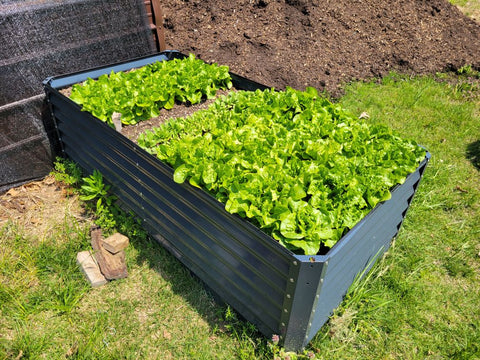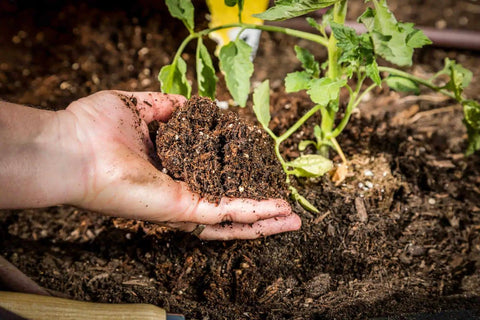As the winter chill settles in and the garden transitions into a state of rest, savvy gardeners understand that December is not just a time for hibernation but a critical juncture for preparation. Conducting soil testing in December can be a transformative practice, laying the groundwork for a thriving garden in the coming year. In this comprehensive blog, we'll explore the significance of soil testing during this seemingly dormant month, highlighting the benefits, the testing process, and how the insights gained can be a roadmap for cultivating a lush and healthy garden. The following content also has some reference value for raised garden beds.

Understanding the Importance of December Soil Testing
- Assessing Soil Health:
December soil testing serves as a snapshot of your soil's health. It provides valuable insights into nutrient levels, pH balance, and the overall composition of the soil. This information is crucial for understanding the specific needs of your plants and ensuring optimal growing conditions.
Gardening Tip: Regular soil testing helps in detecting and addressing nutrient deficiencies or imbalances, preventing potential issues before they impact plant health.
- Planning for Amendments:
Armed with the results of soil testing, gardeners can plan targeted amendments to enhance soil fertility. Whether it's adjusting pH levels, adding organic matter, or supplementing with specific nutrients, December soil testing guides the formulation of a precise and effective amendment strategy.
Gardening Tip: Incorporate organic amendments like compost or well-rotted manure to improve soil structure and fertility.
The Soil Testing Process
- Collecting Soil Samples:
Use a soil auger or a garden trowel to collect samples from various locations in your garden. Combine these samples to create a composite sample representative of your entire garden.
Gardening Tip: Collect samples at different depths, as nutrient distribution can vary in the soil profile.
- Submitting Samples for Testing:
Package the soil samples in clean, labeled containers and submit them to a reputable soil testing laboratory. Many agricultural extension services offer soil testing, or you can opt for private labs.
Gardening Tip: Follow specific guidelines provided by the testing facility regarding sample preparation and submission.
- Interpreting Test Results:
Once the soil testing is complete, you'll receive a detailed report outlining nutrient levels, pH, and recommendations for amendments. Understand the results to make informed decisions about improving your soil.
Gardening Tip: Pay attention to nutrient ratios and interactions, as addressing one nutrient deficiency may affect others.

Key Parameters Analyzed in December Soil Testing
- Nutrient Levels:
Soil testing assesses the levels of essential nutrients such as nitrogen, phosphorus, potassium, and micronutrients. Understanding nutrient availability helps tailor fertilizer applications.
Gardening Tip: Adjust fertilizer types and amounts based on the specific nutrient needs of your plants.
- pH Levels:
Soil pH profoundly influences nutrient availability. December soil testing helps determine whether your soil is acidic, neutral, or alkaline, allowing you to make pH adjustments if necessary.
Gardening Tip: Most plants thrive in slightly acidic to neutral soils (pH 6.0-7.0). You can increase the pH by incorporating lime, and to decrease it, sulfur or peat moss can be used.
- Organic Matter Content:
Soil organic matter contributes to soil structure, moisture retention, and nutrient availability. December soil testing evaluates the organic matter content, guiding decisions on organic amendments.
Gardening Tip: Incorporate organic materials regularly to improve soil structure and microbial activity.
- Texture and Composition:
Soil texture (sand, silt, clay) and composition impact water drainage and retention. Soil testing helps identify these characteristics, allowing adjustments for optimal plant growth.
Gardening Tip: Sandy soils benefit from organic matter additions for improved water retention, while clayey soils may require amendments for enhanced drainage.
Utilizing Soil Test Results for Garden Planning
- Crop Selection:
Based on soil test results, choose crops or plants that align with the soil conditions in your garden. Some plants thrive in slightly acidic soils, while others prefer neutral or alkaline conditions.
- Customized Fertilization:
Tailor your fertilization schedule to address specific nutrient deficiencies identified in the soil test. This targeted approach ensures efficient use of fertilizers and prevents overapplication.
- pH Management:
Adjust soil pH as needed to create an environment conducive to plant growth. This can be achieved through the addition of lime, sulfur, or other pH-adjusting amendments.
Planning Ahead for a Flourishing Garden
- Cover Cropping:
Consider planting cover crops during winter to protect and enrich the soil. Legumes like clover fix nitrogen, enhancing soil fertility for the upcoming growing season.
- Mulching and Winter Protection:
Apply a layer of organic mulch to protect the soil during winter. Mulching conserves moisture, regulates soil temperature, and provides a habitat for beneficial organisms.

Conclusion: December Soil Testing – A Gift to Your Garden's Future
Soil testing in December may seem like a preemptive step, but it's a gift to your garden's future. By taking the time to assess and nurture your soil during the winter months, you set the stage for a vibrant and thriving garden in the coming year. As you plan your garden activities for December, consider soil testing as an essential investment in the health and productivity of your garden. Remember, a flourishing garden starts from the ground up, and December soil testing lays the foundation for a season of bountiful growth.









